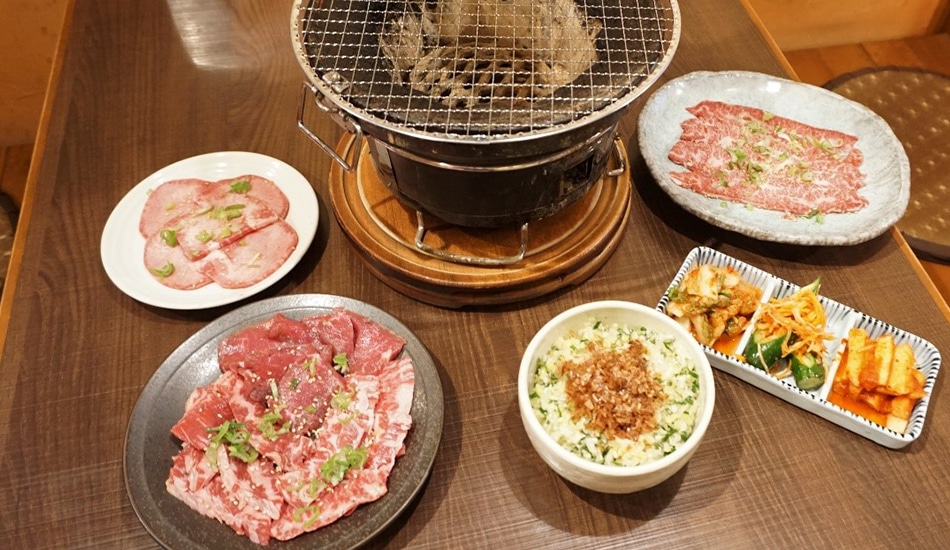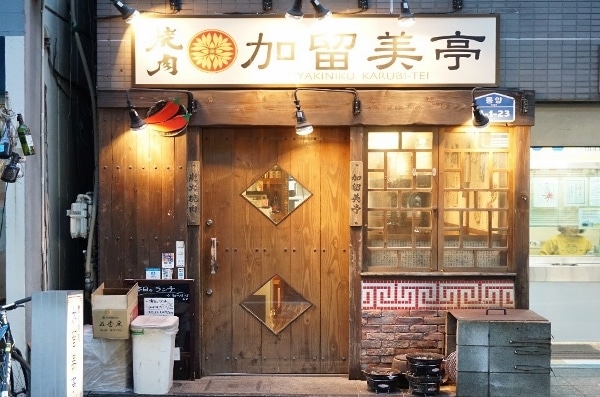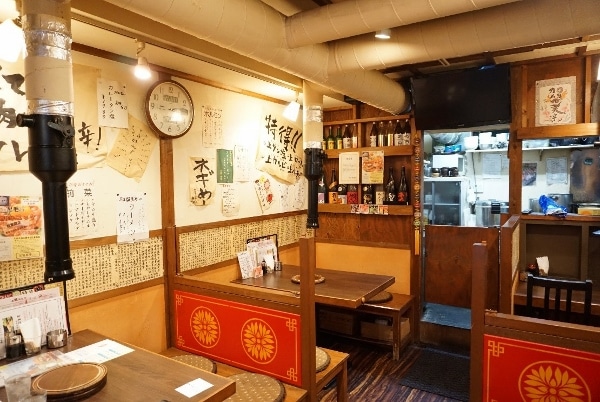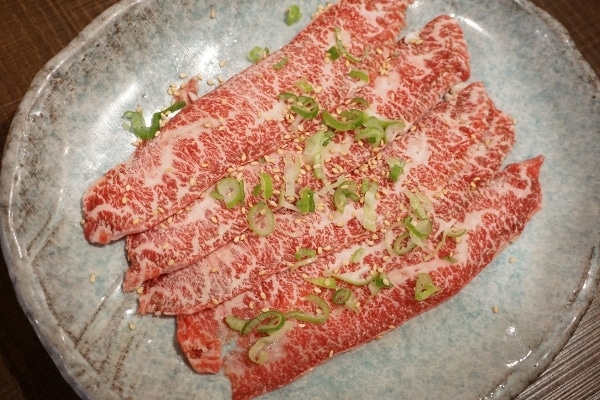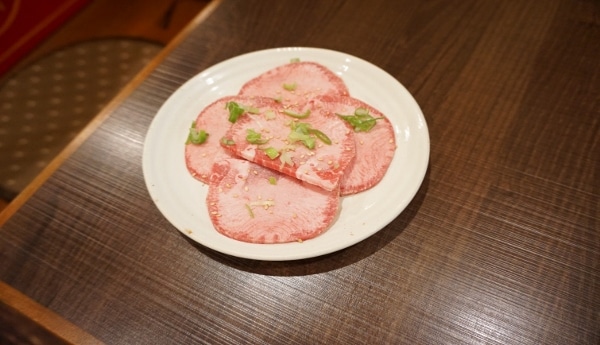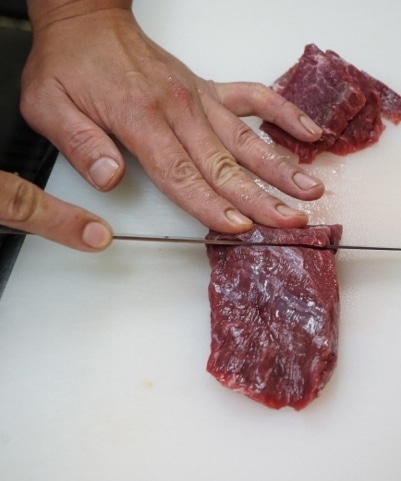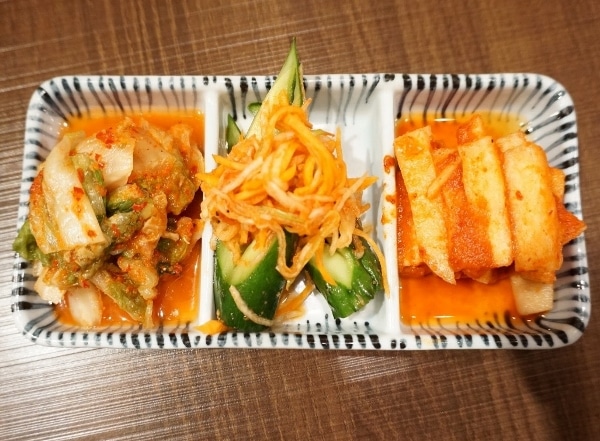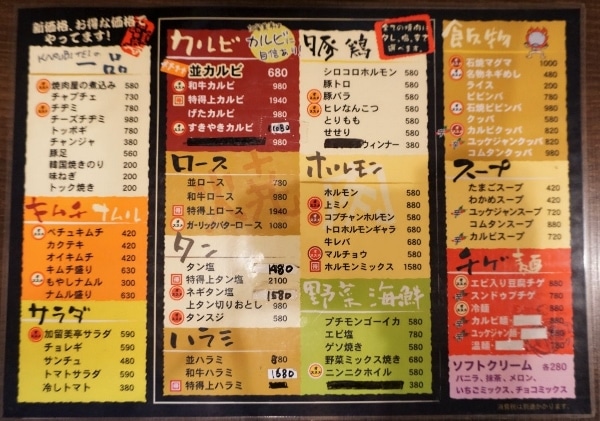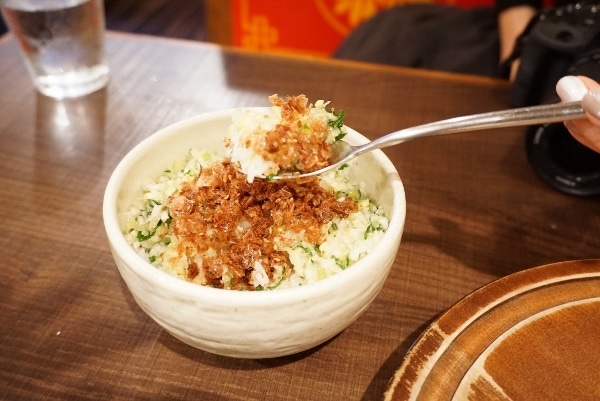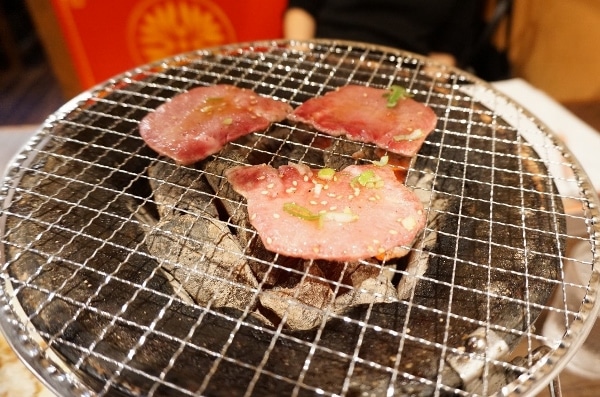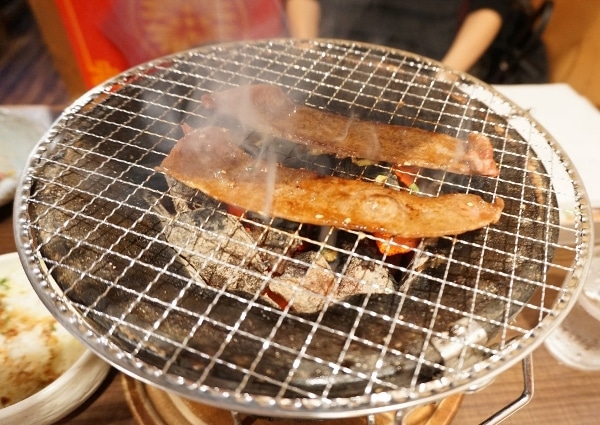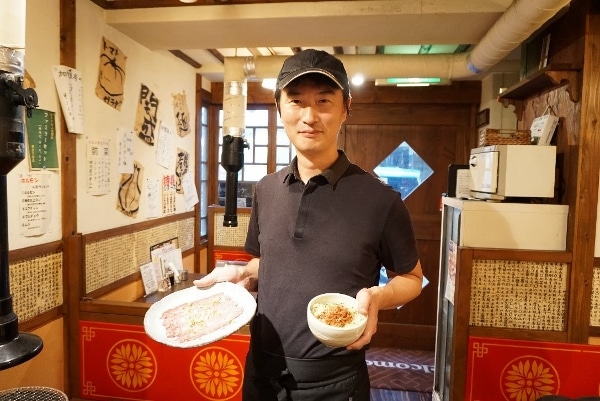The Pleasures of Yakiniku Dining
Published: December 2, 2019
One of the pleasures of working for Kotomise in Koto ward is getting to visit restaurants that I normally do not eat at, and then realise what I have been missing. Sumibiyakiniku Karubi-tei is one such place. Being tucked away in a back street behind Toyocho Metro Station it is easy to miss, despite its homely and welcoming frontage.
Kalbi is a key part of yakiniku or Korean barbecue and consists of slices of beef marinated in a sweet and savoury sauce, usually containing soy, garlic, and sugar and cooked over a charcoal grill.
Sumibiyakiniku Karubi-tei is run by Ms. Kaori Tanaka assisted by her younger chef brother, Masanari, and first opened in 2004 in the Shiohama part of Koto ward before moving to its present location in 2012. This family-run business also has a sister restaurant in the Katsushika area of Tokyo, operated by their father and a mother.
With its red decorated seating partitions and white and cream walls littered with Korean script and recommendations for individual dishes, the restaurant has table seating for 16, plus room for another 4 at the counter, and the whole impression is of a cosy and friendly place to come and eat.
As its Japanese name implies, the restaurant specialises in serving meat grilled (yakiniku) over a charcoal fire (sumibi), placed in the centre of the table, above which a flue, to extract the smoke, is suspended. This is a great way to get a convivial meal going, with everyone joining in placing thinly sliced strips of beef or tongue on the grill and leaning over the smoking fire eagerly waiting for the meat to cook. Mr. Tanaka says that he prefers the use of charcoal over gas or electricity, because it adds a smoky flavour to the meat.
Demonstrating how he prepares dishes prior to cooking, Mr. Tanaka takes a piece of beef; the restaurant uses Japanese, Australian, and US beef depending on the part being served, and carefully slices it at an angle to get the best out of the meat when it is cooked. He says they only use high quality meat, graded A4 and A5 under Japanese standards.
One of the secrets of Sumibiyakiniku Karubi-tei’s popularity is its homemade tare (marinade or dip), which is used to flavour the grilled meat. The Tanaka family has used the same recipe for many years, which contains ginger, onion, apple, lemon and a “secret ingredient” which Mr. Tanaka wouldn’t divulge.
Another essential element of Korean barbeque is kimchi, the spicy and sour Korean dish made of fermented vegetables. Sumibiyakiniku Karubi-tei prepares its own kimchi: Mr. Tanaka’s mother makes this dish from hakusai (Chinese cabbage), whilst Mr. Tanaka himself makes the cucumber and daikon (Japanese giant radish) versions.
Sumibiyakiniku Karubi-tei’s clientele used to consist primarily of businessmen, but Mr. Tanaka says that increasingly women are patronising the restaurant, particularly at lunchtimes, where the menu comprises dishes such as kalbi kuppa (sliced beef with rice soup), pork ginger, cheese takkalbi (spicy stir-fried chicken) and gyutan (beef tongue) curry, which don’t involve lighting the charcoal fires at the tables, sparing diners from going back to the office with their clothes smelling of smoke.
The evening menu contains an extensive list of yakiniku dishes: in addition to kalbi and gyutan there is rōsu (loin), harami (skirt) and horumon (innards) as well as several Korean dishes, such as chige (hotpot) and bibinba (mixed rice).
Whilst the evenings see groups of office workers crowded around the charcoal braziers, the restaurant has always been popular at weekends with families with small children. And with the growth in the number of hotels in the Toyocho station area Sumibiyakiniku Karubi-tei has seen an increase in the number of foreign customers venturing to try out the restaurant.
Although they may be wary of the reception they might receive in this small, intimate establishment, non-Japanese customers are welcome, and Mr. Tanaka laughingly shows off his “survival English” which he uses to explain the menu to non-Japanese speakers
To demonstrate the quality of the meat used by Sumibiyakiniku Karubi-tei, Mr. Tanaka rustled up some gyutan with a lemon dip, and prime Japanese beef kalbi with a sweet dip for us to try, along with a bowl of the restaurant’s speciality, “negimeshi”.
Negimeshi is a popular dish of rice mixed with sesame oil, salt, and lots of finely chopped green onions and, again, a “secret ingredient”; all topped with okaka (finely shaved bonito flakes) and soy sauce. According to Mr. Tanaka, kids love this dish as it is not spicy, and certainly this “big kid” enjoyed it, and at 480 yen (including tax), it represents good value.
The Australian beef gyutan was soft and tasty, and when dipped in the bowl of lemon sauce which came with it was pleasant to the palate and definitely “moreish”,
whilst the premium kalbi was sooo~ tender and succulent when dipped in the sweet tare which came with it.
According to Mr. Tanaka, many diners enjoy drinking shochu with their yakiniku, and if you consider yourself a connoisseur, he has a selection of brands distilled from sweet potato or barley, as well as rice, shiso (beefsteak plant) and black sugar to choose from.
So, go on, drop any inhibitions you might have and stick your head around the door and let Mr. Tanaka tempt you to the pleasures of sumibiyakiniku.
Story and photographs by Jeremy Hutchinson

